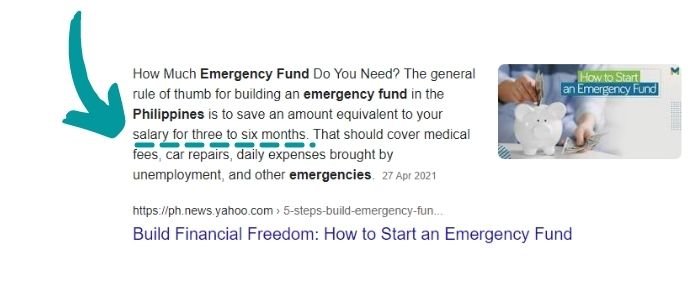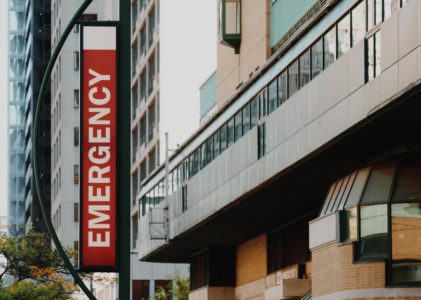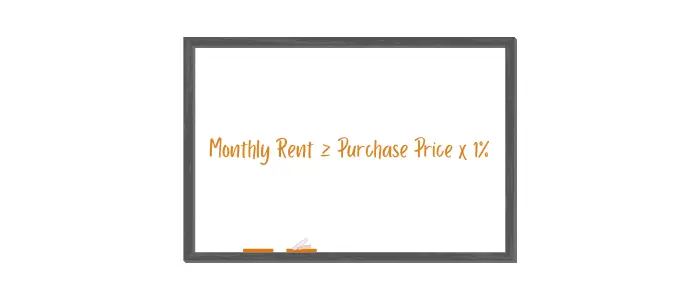Three (3) to six (6) months of monthly expenses. What more could there be? Isn’t building an emergency fund as simple as this rule of thumb? It sure is, but then again this is a generalized rule and every household will probably have its optimal size.
How much of an emergency fund should you have? Most experts agree that having 3 to 6 months’ worth of expenses should keep you safe. Basing it on income, rather than expenses, will often suffice but is indicative of misunderstanding the purpose of an emergency fund, and might mean over-allocating what’s necessary.
In this post, we’ll cover the core reasons for having an emergency fund, why more isn’t always better, if you should save vs. invest first, where (and where not) to keep it, other implementations of an emergency fund, and how to calculate yours.

Page Contents
Expenses, not income
A common misconception is to set an emergency fund that’s equivalent to 3 to 6 months of your income (not expenses). While, yes, you’re more likely to build a bigger nest and be safer (because we’re assuming you earn more than you spend — income is larger than expenses), this mix-up is indicative of at least two problems.

(Don’t forget to include your loan amortization payments when estimating your monthly expenses.)
Problem number 1: Understanding the purpose of an emergency fund
The real purpose of an emergency fund is simple. It is to have the money when an emergency happens.
Two of the most commonly cited emergencies include sudden medical emergencies and losing a job. But there are certainly other uses. Whether or not an expense falls in the emergency category is your decision to make.
The point is this: Your emergency fund is cash to cover living expenses when a significant source of your income departs. Having 6 months’ worth of expenses saved, therefore, means you can get by the next 6 months with less worry.
If you saved 3 months’ worth of expenses, then that’s 3 months leeway with less worry and 3 months to recover. So clearly, the larger the emergency fund the safer you feel.
And again, if it’s based on salary or income, then you’ll probably have a larger fund anyway. But framing it based on monthly expenses makes the purpose clear for beginners.
If having funds set aside makes us feel safe, then why not just save the equivalent of 12, 24, or 36 months?
No one’s to say you can’t or shouldn’t. It’s definitely a preference, so do that if it’s what makes you comfortable. But also know there’s a tradeoff. (See problem number 2.)
Problem number 2: Over budgeting and losing out on investments
When you save, say 36 months, but really “need” just 6 months, then the 30 months extra is underperforming as an investment. In economic terms, it’s a form of opportunity cost.
Let’s pretend your monthly living expenses are Php50,000. That’s a 6-month emergency fund of Php300,000 (i.e., Php50,000 x 6 months) and a 36-month emergency fund of Php1.8 million (i.e., Php50,000 x 36 months). If Php300,000 is all you really need, then that’s Php1.5 million of foregone investments. At a 10% annual return (10% is around the historical average of stock market returns), that is equivalent to Php150,000 of lost income per year.
Now of course we might be splitting hairs between 6 months vs. 12 months, or you might really need 36 months. Regardless, the fact remains that you may be losing out on investments by over budgeting your emergency fund. A larger emergency fund isn’t always better in the grand scheme of things.
If you find comfort in extremely large emergency funds, then that’s fine as long as you understand the implications.
Determining the size of your emergency fund
How much should your emergency fund be? Or another way of asking the same question is how many months should your emergency fund be? Should it be 3, 6, or 12 months? Maybe more?
Factors to consider
Again, it has more to do with preference than some hard-and-fast rule with absolute calculations. But consider the following questions when making your decision.
- Are you in a stable job? Are you in an industry with high employee turnover? (Greater stability affords you a smaller-sized emergency fund.)
- Do you plan on eventually starting a business? (If yes, double your emergency fund. A fund in case the business fails, and a buffer for unknown and unexpected personal emergencies.)
- Do you have insurance to cover most medical emergencies? (But keep in mind that this doesn’t address non-medical emergencies.)
- Where do you expect to invest your money in excess of the emergency fund? (If it’s in a relatively safe investment alternative, then you can maybe lower your fund a bit.)
- How is your risk tolerance? (The lower your risk tolerance is, the greater the emergency fund should probably be.)
I’m sure there are a lot more factors to consider. Please share them in the comments section below.
(Related posts: Is Entrepreneurship for Everyone? No, But It’s a Choice: 10 Real Tips to Switch)
Tracking your expenses
Clearly, you’ll have to know your monthly expenses before you can calculate your emergency fund.
A spreadsheet tracker like this can help. Or apply the Kakeibo method if you struggle with budgeting. There are also lots of smartphone apps to track your expenses. Or pen-and-paper works.
At the end of the day, you need to track your monthly living expenses because this is the number you’ll need to cover for however many months.
Emergency fund calculator
When you’re able to track your expenses and have gone through the factors to consider in determining the size of your fund, then the most basic of calculators will do.
Emergency Fund = Months You Want to Save x Monthly Expenses
To estimate the months you want to save, maybe start with the rule-of-thumb 3 to 6 months and then add or subtract based on the factors to consider. How many months you add or subtract is an art form.
Where to keep emergency funds
Is there a difference between a savings account and your emergency fund?
This is a common point of confusion. In reality, an emergency fund is more like a mental note to yourself. You can have your emergency fund and savings for daily expenses in one account. It’s how you tag what’s inside the account that matters.
That said, I do recommend setting up a separate account for the following reasons:
- It is easier to track. You’ll know right away where you’re at.
- You’re less likely to spend it.
But where exactly
When choosing platforms to keep your emergency fund, I prefer not to offer specific products or direct answers to questions like “the best bank for an emergency fund in the Philippines.” What I mean is this: I’d rather recommend “money market fund” rather than “Bank ABC money market.”
I get how other financial advisors nitpick the slightest differences in margins and interest rates. But at the end of the day, rates are flexible and what’s “best” right now may not provide the highest returns (or be the most convenient to use) in the future. I mean, if I were part of the losing company, I’d certainly strive to outperform my competitors. Winners and losers change all the time.
So forgive the generalization, but emergency funds should be kept in:
- Bank accounts (brick-and-mortar or digital banks)
- Time deposits
- UITF or Mutual Funds invested in money-market instruments with NO minimum holding period
- Under your mattress (I guess this is better than those mentioned below.)
Did I miss anything? Let me know in the comments. I’d be happy to revise this post with due credit.
Where not to keep your emergency fund
I usually never say “never,” but keeping your funds in the following investments defeats the purpose of an emergency fund. So I’d probably go as far as saying “never” in this case.
- Stocks (And similar long-term investments such as UITFs or Mutual Funds invested in, whole or part, stocks or long-term bonds.)
- Real estate
- Insurance
As a simplified guideline, never put your emergency fund in illiquid and volatile (risky) investments.
Emergency fund or investment first
I’ve been a huge proponent of the make money work hard mantra. (See my 9 Steps to Achieve Financial Freedom.)
In a nutshell, I think every Peso should have a job. Money in stocks and real estate work harder than cash in the bank because they bring in more money back. But emergency funds, although they theoretically don’t bring any money back (or very little money back) have a special role. And that is to protect your other funds, ensuring stocks, real estate, and other investments can do what they do.
If we follow the “cash are soldiers” analogy (See the section on Real examples in the world of finance, Finance for People Who Hate Math), then investments are your military offensive unit, bringing back more soldiers to your cause, and the emergency fund is your defensive unit.
(I actually just thought of the defensive unit analogy while writing this part so I hope the military parallelism holds!)
So do you prepare your defensive unit first (i.e., the emergency fund), or do set up your offensive unit first (i.e., investments)?
Are you risk-averse or risk-tolerant?
The answer depends on your risk appetite. (Again, preference.)
A risk-averse person might set up their emergency fund first. It matters less if investments don’t earn right now, as long as they’re secure.
A more risk-tolerant person, and certainly risk-seekers, will probably invest more. Yes, the returns are greater because you start earning from your investments earlier, but the risks are sensibly higher. An unexpected emergency will set you back more. Think of what happens when your investments are in illiquid assets and an emergency happens. You’ll probably be forced to sell at depressed prices.
For most people, setting up an emergency fund is likely the wiser choice. But again, and I can’t emphasize this enough, it’s still a matter of preference. And again, what’s important is you know the implications of your choice.
Emergency funds beyond personal accounts
Setting up emergency funds is a good habit that goes beyond what you do as a household. The benefits of an emergency fund hold in business and real estate properties.
An emergency fund for business
A profitable business, as in one that earns money in the accounting sense, can be forced to shut down due to cash flow problems. According to this article by Score.org, 82% of small businesses fail due to cash flow problems.
Emergency funds help alleviate this setback. It’s prudent to set aside some cash, even if it means slower growth, to increase a business’s chances of survival.
(Related: Step 4 to Financial Freedom, Have the guts to start a business)
An emergency fund for rental property
Buying properties using leverage is a way to fast-track growth, which is why it’s sometimes beneficial to buy properties with other people’s money (e.g., banks, private lenders, etc.). This typically means regular payments in the form of monthly amortizations.
(Related: Building Wealth with Real Estate Through Property Accumulation)
It’s nice to have a property fund regardless of the property’s financing method, but it’s definitely a must for properties with monthly amortizations. I’d say a fund worth 6 months of monthly amortization is a start.
When you have 6-months’ worth of payments in an emergency fund, then that assures your ability to pay the monthly amortizations even at an occupancy rate of zero.
For a portfolio of multiple properties, a lower emergency fund level per property is valid. Think about 100 real estate properties in a portfolio. Having a fund worth 6 months per property for 100 properties has an extremely high and unnecessary opportunity cost.
Conclusion
Determining the size of your household’s emergency fund is a matter of introspection. Most experts agree that 3 to 6 months’ worth of living expenses will suffice. But this is a general rule that fails to consider your unique circumstances.
Like many things in finance, the ideal size of your emergency fund is a function of preference. It’ll depend on your risk tolerance, income stability, existing portfolio, and future plans, among others.
Start by tracking your monthly expenses. And then think about how many months of expenses set aside will mean you’re free from worry.








